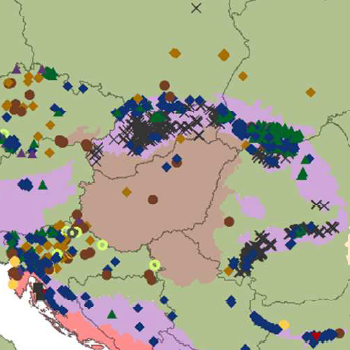Where are Europe’s last primary forests?
Agriculture and forestry have transformed much of Europe – but truly wild places still exist!
Researchers from the Geography Department of Humboldt-Universität zu Berlin led the creation of the first map of Europe’s last wild forests, including more than 1.4 million hectares in 34 European countries. “It is not that these forests were never touched by man, this would be hard to believe in Europe” explains Dr Francesco Maria Sabatini, lead author of the study. “Still, these are forests where there are no clearly visible indications of human activities, maybe because blurred by decades of non-intervention, and where the ecological processes follow a natural dynamics”. The compilation of the map was a huge task, according to the authors. “We contacted hundreds of forest scientists, experts and NGO activists from all over Europe asking to share information on where to find such forests in their country. Without their direct engagement we could have never been able to build our database, which is the most comprehensive ever compiled for Europe”.
The study, recently published in the journal Diversity & Distributions, highlights that primary forests in Europe are generally very rare, located in remote areas, and fragmented into small patches. “The European landscape is the result of millennia of human activities, so it is not surprising that only a small fraction of our forests are still substantially undisturbed” explains Prof Tobias Kuemmerle, also an author of the study. “Although such forests only correspond to a tiny fraction of the total forest area in Europe,” he continues, “they are absolutely outstanding in terms of their ecological and conservation value. Primary forests are the only places where many endangered species occur, and scientists consider them as natural laboratories for understanding people’s impact on forest ecosystems. Knowing where these rare forests are is therefore extremely important, but until this study no unified map existed for Europe.” ... See Forests & CO blog for more details.
Publication
Sabatini, F. M., S. Burrascano, W. S. Keeton, C. Levers, M. Lindner, F. Pötzschner, P. J. Verkerk, J. Bauhus, E. Buchwald, O. Chaskovsky, N. Debaive, F. Horváth, M. Garbarino, N. Grigoriadis, F. Lombardi, I. M. Duarte, P. Meyer, R. Midteng, S. Mikac, M. Mikolas, R. Motta, G. Mozgeris, L. Nunes, M. Panayotov, P. Ódor, A. Ruete, B. Simovski, J. Stillhard, M. Svoboda, J. Szwagrzyk, O.-P. Tikkanen, R. Volosyanchuk, T. Vrska, T. M. Zlatanov, and T. Kuemmerle. 2018. Where are Europe’s last primary forests? Diversity and Distributions. DOI: 10.1111/ddi.12778
Further information
Link to the free access study:
https://onlinelibrary.wiley.com/doi/abs/10.1111/ddi.12778
Link to the project:
https://www.geographie.hu-berlin.de/en/professorships/biogeography/projects/forests
Link to Research blog:
https://forestsandco.wordpress.com/
